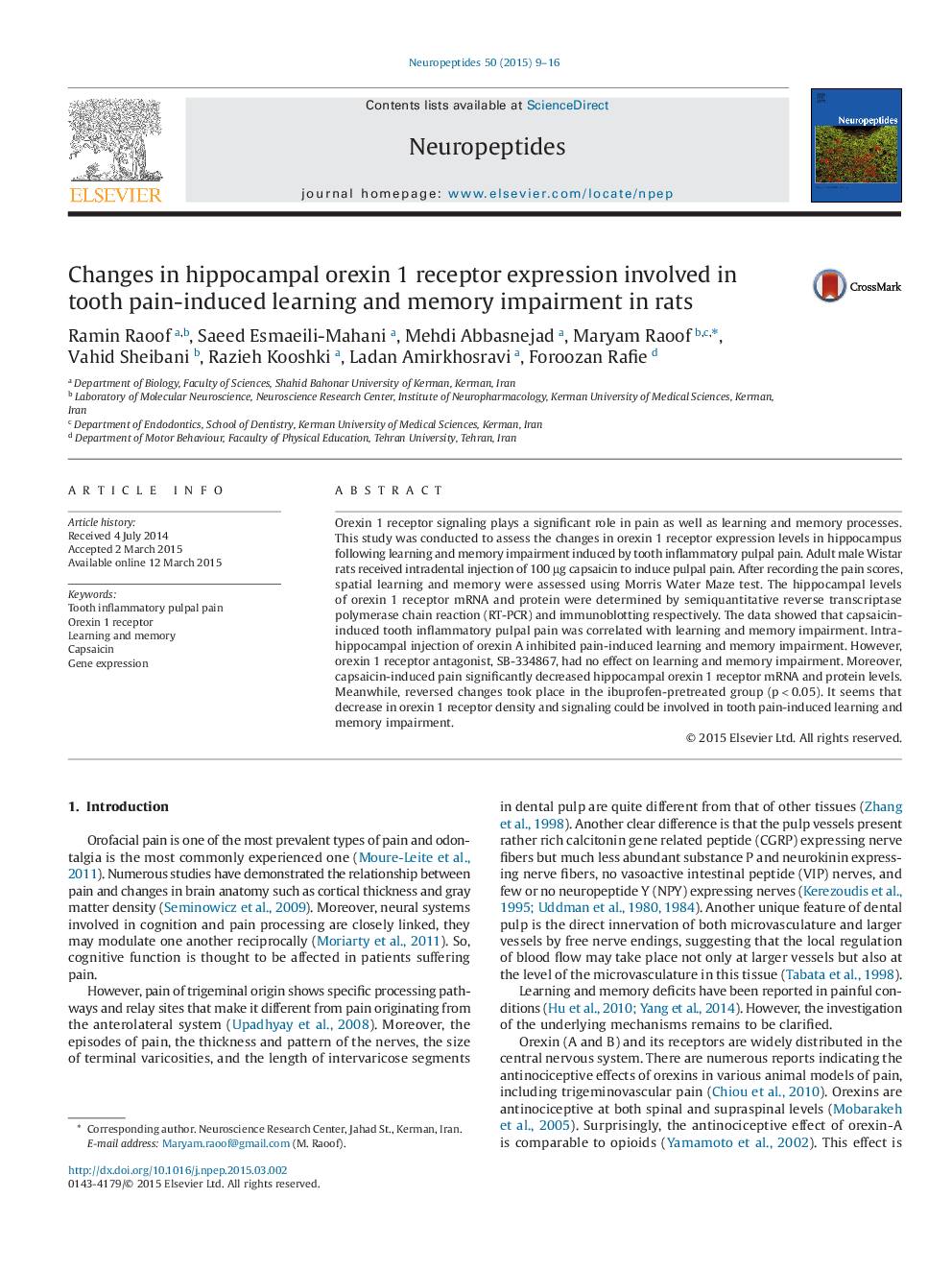| Article ID | Journal | Published Year | Pages | File Type |
|---|---|---|---|---|
| 2807998 | Neuropeptides | 2015 | 8 Pages |
•Intradental application of capsaicin (100 µg/rat) significantly affected nociceptive behaviors.•Capsaicin-induced pulpal pain impairs spatial learning and memory ability of male rats in the Morris water maze.•The levels of orexin 1 receptor mRNA and protein in the hippocampus of capsaicin-treated rats were significantly decreased.
Orexin 1 receptor signaling plays a significant role in pain as well as learning and memory processes. This study was conducted to assess the changes in orexin 1 receptor expression levels in hippocampus following learning and memory impairment induced by tooth inflammatory pulpal pain. Adult male Wistar rats received intradental injection of 100 µg capsaicin to induce pulpal pain. After recording the pain scores, spatial learning and memory were assessed using Morris Water Maze test. The hippocampal levels of orexin 1 receptor mRNA and protein were determined by semiquantitative reverse transcriptase polymerase chain reaction (RT-PCR) and immunoblotting respectively. The data showed that capsaicin-induced tooth inflammatory pulpal pain was correlated with learning and memory impairment. Intra-hippocampal injection of orexin A inhibited pain-induced learning and memory impairment. However, orexin 1 receptor antagonist, SB-334867, had no effect on learning and memory impairment. Moreover, capsaicin-induced pain significantly decreased hippocampal orexin 1 receptor mRNA and protein levels. Meanwhile, reversed changes took place in the ibuprofen-pretreated group (p < 0.05). It seems that decrease in orexin 1 receptor density and signaling could be involved in tooth pain-induced learning and memory impairment.
